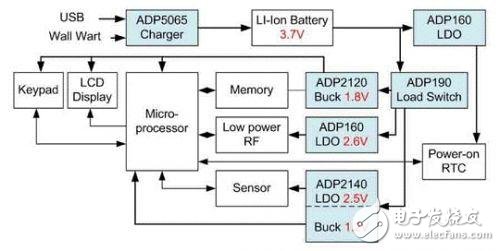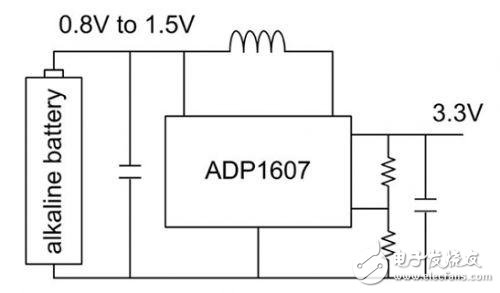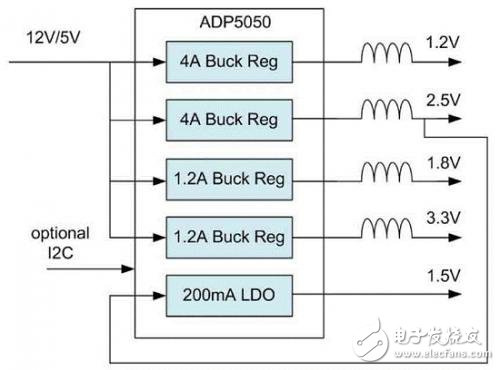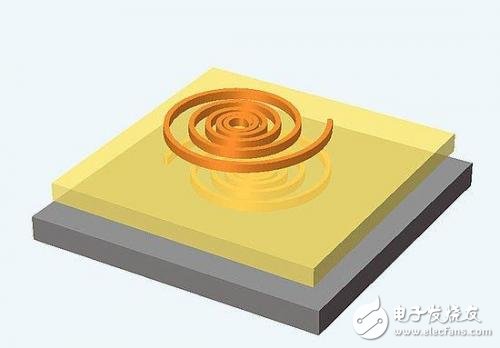Different healthcare applications have different requirements for power management solutions. In terms of power management, healthcare is a very interesting market segment. Despite the very long design cycle of healthcare products, high-level innovations continue to spur demand for healthcare electronics. These innovative products not only replace old equipment, but also use them in new markets and applications, which were not available a few years ago. This article will discuss four different areas of healthcare applications. They are home healthcare, instrumentation, patient monitoring and imaging applications.
Family health care
There are a large number of design practices in home health care. Global ageing pressures, economic growth and technological innovation have brought many new applications to the home healthcare sector. For patients, the benefits include greater flexibility, better service, and fewer visits to doctors. Although the home healthcare market has long existed, more and more advanced solutions for consumers have emerged recently. Examples of such solutions are: exercise monitors, blood pressure monitors, and heart rate monitors. In addition, portable blood analyzers and pulse oximeter systems are also entering the field of home healthcare today.
From a power management perspective, all of these systems have high levels of integration due to the necessary portability. For truly portable products, they will be battery powered, thus requiring a system with high power efficiency. In this type of application, lower power consumption extends the operating time of the device without charging or replacing the battery. Finally, cost is also a very important parameter. While the cost of a power management solution may not be a critical parameter in some other healthcare applications, it is important in home healthcare. Cost constraints have far-reaching implications for today's consumer electronics market.
Figure 1 shows a power supply chain using a lithium ion rechargeable battery system. The power architecture ensures that certain parts of the circuit can be turned off by the load switch (such as the ADP190), while another part of the circuit that supplies the real-time clock (RTC) is always on (such as the ADP160). When turned on, the ADP190 has a ground current of less than 2uA, while the ADP160 consumes only about 560nA of supply current at no load. This feature keeps the battery's permanent discharge to a minimum. The ADP2140 is a highly integrated buck switching regulator with integrated linear regulator. This power management unit saves space and costs.

Figure 1: Typical power supply chain for portable battery-powered home healthcare equipment.
Some low-cost portable healthcare systems for short-term use may be designed around non-rechargeable alkaline batteries. Using a single battery will be more advantageous in terms of weight and cost than a typical dual battery design. The challenge for a single alkaline battery system is that the battery voltage range is only 0.8 V to 1.5 V. In order to power electronic equipment, a boost regulator that can handle low input voltages with high efficiency must be used. Figure 2 shows this type of application using the ADP1607 as the first step in power conversion. The circuit can generate 3.3V to meet most system requirements.

Figure 2: Powering a portable healthcare system with a single alkaline battery.
Instrumentation
Examples of instrumentation applications include: blood analyzers, dialyzers, and clinical diagnostic equipment. Instrumentation equipment is usually not portable. The power management requirements of such applications are not as limited by many factors as discussed in the Family Health Care section. In the field of instrumentation, more power is usually available, so the requirements for power efficiency are not critical. Although high integration is undoubtedly helpful to the system, this is not the primary consideration. In most cases, what is important for instrumentation applications is low noise performance. Switching regulators and linear regulators must have extremely low noise for extremely accurate measurements. One or more intermediate voltages are typically generated using a silver box type AC-DC power supply. These rails are then used to generate lower voltages.
Figure 3 shows a miniature PMU (Power Management Unit). It is an ADP5050 device powered by a 12V rail from an AC-DC power supply. The PMU integrates four switching regulators and a linear regulator. Although compact, it integrates many of the necessary functions. The switching frequency of a single buck regulator is synchronized and phase shifted to minimize noise on the input line and to support small value input capacitors. A unique feature is that two switching regulators can be operated with half the switching frequency of the other two regulators. This maintains a predictable low EMI curve while allowing low power rails to operate at higher switching frequencies and lower switching frequencies on high power rails for the highest possible efficiency.
Last but not least, the I2C interface is provided to dynamically change the output voltage, check the chip temperature, set phase shifts for different channels, power good indications, and enable a single channel. These features help intelligent instrumentation systems monitor and control power management performance.

Figure 3: Micro power management unit providing multi-voltage and I2C connectivity.
Patient monitoring
Such systems are part of the clinical system. They are used to measure blood pressure, but can also be used in electrocardiogram (ECG) and pulse oximetry systems. This type of power management is usually powered by lines, so energy efficiency is not a big issue as long as it can handle heat dissipation. What really matters is reliability, galvanic isolation for safety purposes, and low noise. In order to increase reliability, a spare battery is sometimes provided. When the patient is transferred to a different hospital, the backup battery helps provide uninterrupted vital signs monitoring.
Isolation needs to meet the most stringent medical safety standards, IEC 60601-1. Digital isolators using iCouplers technology are replacing optocouplers without affecting isolation integrity. The advantage of this trend is to avoid the aging effect of the optocoupler for long-term stability while providing different semiconductor functions in a single package, such as USB, I2C, and power management switching regulators. These devices offer enhanced insulation and are capable of withstanding 10kV surges as specified by IEC 60747-5-5. iCoupler products feature chip-scale transformers that have very robust common-mode transient immunity compared to optocouplers and capacitor-based digital isolators.
Figure 4 shows the concept of inductive isolation. Each side of the barrier has an inductor consisting of polyimide, silicon dioxide (SiO2) or similar isolation material.

Figure 4: Inductive digital coupling concept across the isolation barrier.
Shenzhen Kaixuanye Technology Co., Ltd. , https://www.iconlinekxys.com
![<?echo $_SERVER['SERVER_NAME'];?>](/template/twentyseventeen/skin/images/header.jpg)